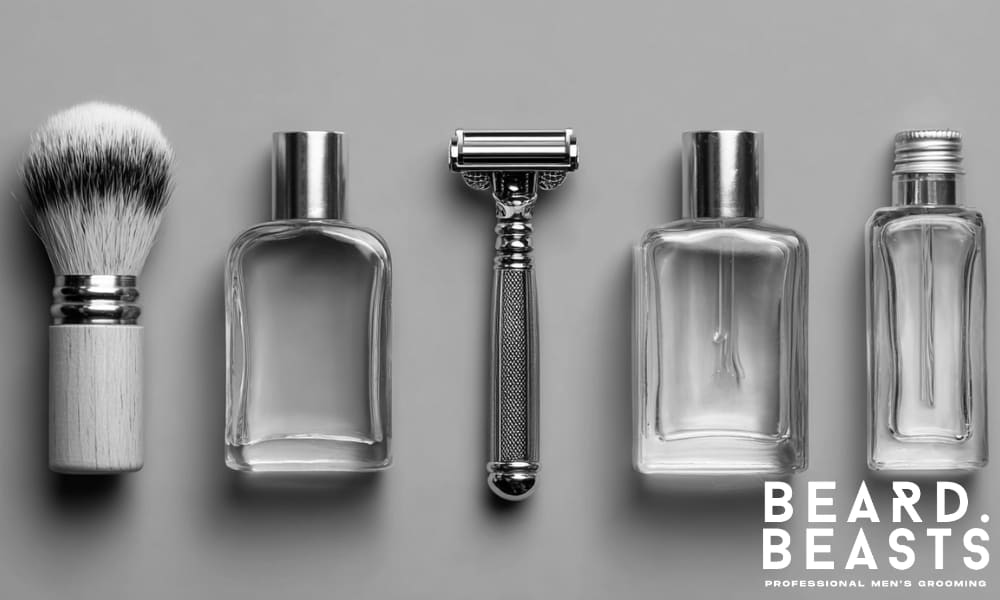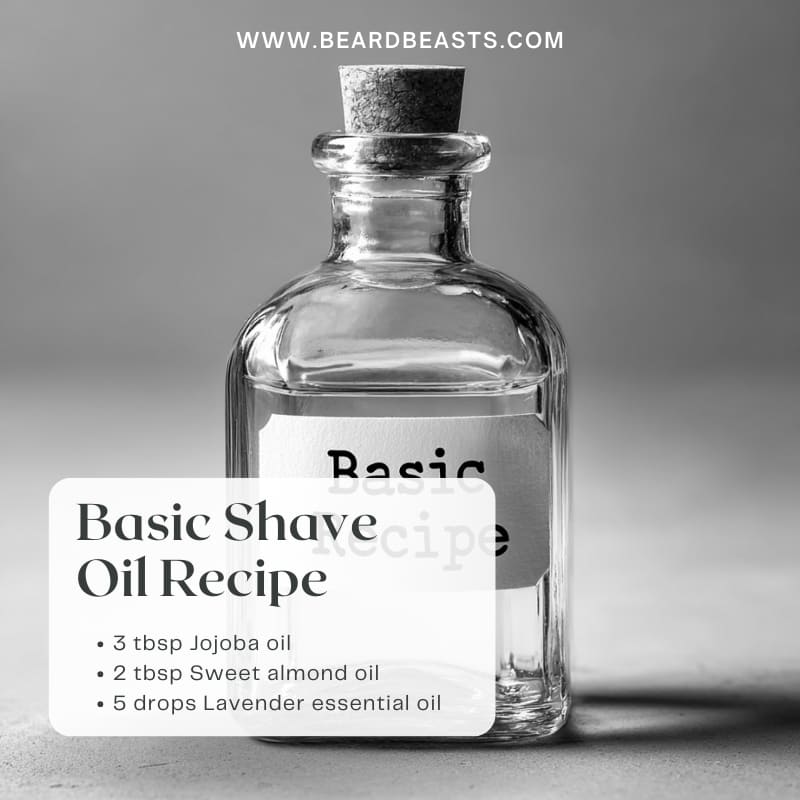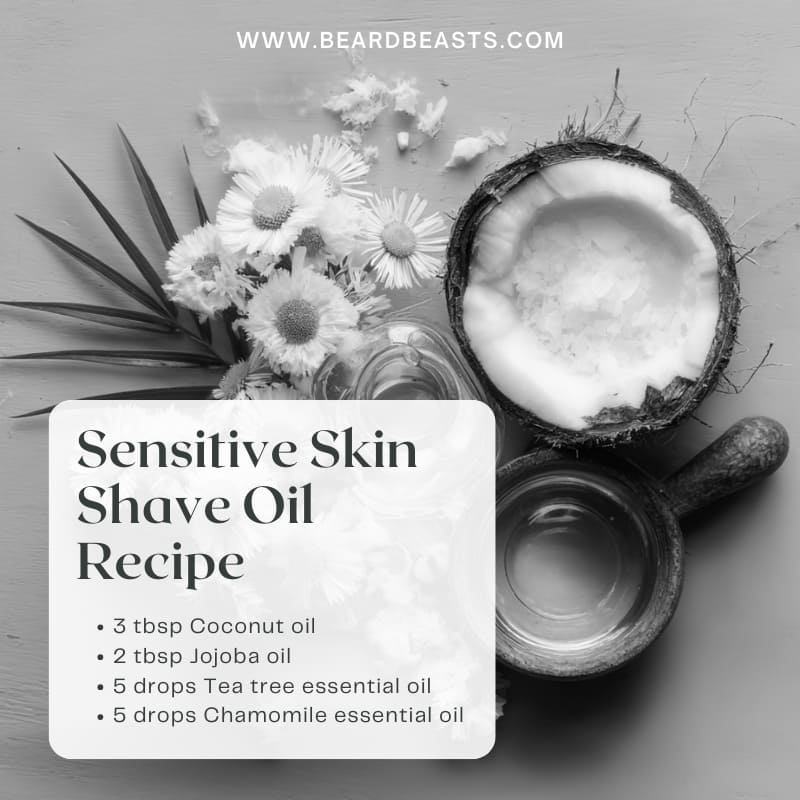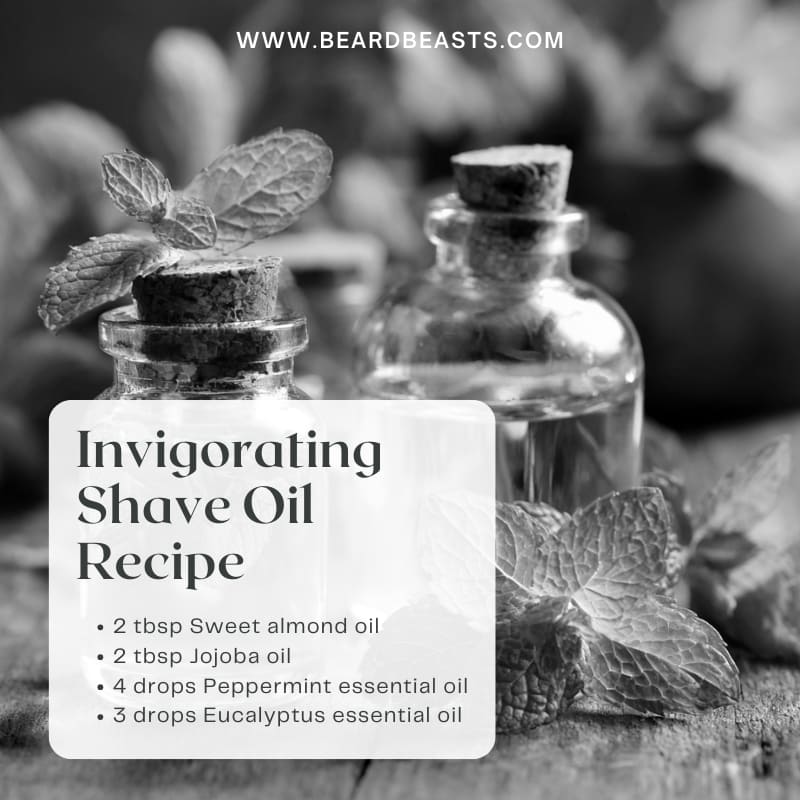Shaving doesn’t have to be harsh or expensive. By making your own DIY shave oil, you can avoid synthetic chemicals, customize the formula to suit your skin, and enjoy a budget-friendly solution.
Traditional shaving creams and gels often contain synthetic chemicals that can irritate the skin and leave behind unwanted residue. By making your own homemade shave oil, you can avoid these chemicals, personalize the formula for your skin, and enjoy a budget-friendly solution.
Why Choose DIY Shave Oil?

Personalization ensures you’re not relying on generic shaving products. By selecting your own ingredients, you create a formula that meets your skin’s unique needs, enhancing your shaving experience for smoother, healthier results.
Cost-effectiveness elevates DIY shave oil as a smart grooming investment. You can achieve a high-quality shave without the inflated costs of commercial brands, delivering superior performance on your terms.
Natural ingredients offer more than just a better shave—they provide skin benefits that mass-produced products can’t match. DIY shave oil is free from chemicals, using only pure oils that nourish, hydrate, and protect your skin with every shave.
Key Ingredients for DIY Shave Oil
To make an effective DIY shave oil, you’ll need to carefully choose your ingredients based on their benefits for both shaving performance and skin health. Here are the essential components to create a high-quality shave oil:
Carrier Oils
Carrier oils form the base of your DIY shave oil, providing the smooth glide necessary for a close and comfortable shave. Some of the most popular carrier oils include:
- Jojoba oil: Moisturizes and mimics the skin’s natural oils.
- Sweet almond oil: Light and nourishing, ideal for sensitive skin.
- Coconut oil: Offers deep hydration and has natural antimicrobial properties.
These oils help the razor glide effortlessly over your skin while providing moisture and preventing irritation.
Essential Oils
Essential oils add fragrance and offer additional skin benefits. Commonly used essential oils include:
- Tea tree oil: Known for its antibacterial and antiseptic properties.
- Eucalyptus oil: Soothes the skin and reduces inflammation.
- Lavender oil: Provides calming effects while promoting healing.
These oils not only enhance the sensory experience but also help maintain healthy skin during and after shaving.
Vitamin E Oil
Vitamin E oil is a powerful antioxidant that helps protect and repair the skin. It plays a vital role in:
- Preventing dryness: Helps to lock in moisture, leaving the skin soft.
- Healing and protecting: Reduces irritation and promotes the skin’s natural repair process.
Including vitamin E in your shave oil helps improve skin texture and provides lasting hydration.
These key ingredients combine to create a shave oil that delivers both an effective shave and healthier skin. By choosing the right oils, you ensure a smooth, comfortable, and nourishing shaving experience every time.
Top DIY Shave Oil Recipes
Here are four effective DIY shave oil recipes for different preferences and skin types:
Basic Shave Oil Recipe

This simple recipe is perfect for those who want a reliable, no-fuss shave oil. It hydrates and protects the skin with minimal ingredients.
Ingredients:
- 3 tbsp Jojoba oil
- 2 tbsp Sweet almond oil
- 5 drops Lavender essential oil
Benefits: Hydrates and softens skin while providing a smooth shave. Lavender oil adds a calming fragrance and skin-healing properties.
Sensitive Skin Shave Oil Recipe

Designed for men with sensitive skin, this recipe is soothing and helps reduce redness and irritation.
Ingredients:
- 3 tbsp Coconut oil
- 2 tbsp Jojoba oil
- 5 drops Tea tree essential oil
- 5 drops Chamomile essential oil
Benefits: Coconut oil provides deep hydration, while chamomile and tea tree oils offer antibacterial and anti-inflammatory effects, making this recipe ideal for sensitive skin.
Invigorating Shave Oil Recipe

This energizing blend will wake you up in the morning and leave your skin refreshed after a shave.
Ingredients:
- 2 tbsp Sweet almond oil
- 2 tbsp Jojoba oil
- 4 drops Peppermint essential oil
- 3 drops Eucalyptus essential oil
Benefits: Peppermint and eucalyptus oil invigorates the senses and offer a cooling effect, while sweet almond oil nourishes and moisturizes.
Hydrating Shave Oil Recipe

Perfect for dry or dehydrated skin, this recipe locks in moisture and leaves the skin feeling soft and nourished.
Ingredients:
- 3 tbsp Coconut oil
- 2 tbsp Argan oil
- 5 drops Lavender essential oil
- 3 drops Vitamin E oil
Benefits: Coconut oil and argan oil provide deep hydration, while lavender and Vitamin E oil soothe the skin, reducing dryness and irritation.
These shave oil recipes cater to various skin types and needs, allowing you to enjoy a smooth, customized shave every time. With the right ingredients, you’ll achieve both superior performance and healthier skin.
How to Make DIY Shave Oil
Making your own shave oil is simple and quick. Follow these easy steps to create a high-quality, customized shave oil that suits your skin and grooming needs.
Step 1: Choose Your Ingredients
Start by selecting the ingredients based on your skin type and desired benefits. Refer to the Top DIY Shave Oil Recipes above to help guide your choices. Make sure to use high-quality, pure oils to ensure the best results.
Step 2: Measure and Mix
Measure the ingredients as per your chosen recipe. Use a small funnel to pour the oils into a clean, empty bottle. If you’re making a larger batch, adjust the proportions accordingly.
- Pro Tip: Start with the carrier oils as the base, then add essential oils drop by drop to ensure the right balance.
Step 3: Blend and Shake
Once all ingredients are in the bottle, seal it tightly and shake vigorously. This will ensure all the oils are blended together, creating a smooth consistency.
- Pro Tip: Always shake the bottle before use, as natural oils may separate over time.
Step 4: Test and Adjust
Before using your shave oil, perform a small patch test to ensure the oils do not cause any skin irritation. If needed, adjust the blend by adding more of your preferred oils. For example, if the oil feels too greasy, add more jojoba oil for a lighter texture.
Step 5: Store and Use
Store your shave oil in a cool, dark place to maintain its potency. Use it by applying a few drops to damp skin before shaving. Massage gently to create a smooth base for your razor, and enjoy a comfortable shave.
Making your own shave oil is an easy, cost-effective way to enhance your grooming routine with natural, nourishing ingredients. Once you’ve perfected your formula, you’ll never look back at store-bought products again.
Common Mistakes to Avoid When Using DIY Shave Oil
While DIY shave oil can provide an excellent shaving experience, there are a few common mistakes that can reduce its effectiveness. Avoid these errors for the best results:
Using Too Much Oil
It’s easy to overdo it with shave oil, but more isn’t always better. Using too much oil can lead to a greasy feel and make shaving less effective. Start with a few drops and add more if necessary.
Skipping the Patch Test
Different oils can cause allergic reactions or irritation, especially if you have sensitive skin. Always test your homemade shave oil on a small patch of skin before using it on your entire face to avoid any negative reactions.
Not Shaking the Bottle Before Use
Natural oils can separate over time. If you don’t shake the bottle before use, the ingredients may not be evenly distributed, leading to uneven application. Always shake your shave oil well before use.
Using the Wrong Oils for Your Skin Type
Choosing the wrong carrier or essential oils for your skin type can lead to irritation or an ineffective shave. Make sure you select oils that cater to your skin’s specific needs—whether it’s sensitive, oily, or dry skin.
Applying Shave Oil on Dry Skin
For optimal results, always apply shave oil to damp skin. Dry skin doesn’t absorb oil as effectively, which can lead to a rougher shave and more irritation. Always prepare your skin by washing with warm water beforehand.
Avoiding these common mistakes ensures that your DIY shave oil delivers the best performance, leaving your skin feeling smooth and nourished after every shave.
Final Thoughts
DIY shave oil is a powerful tool in your grooming routine, offering a natural, customizable, and budget-friendly solution for a smooth, irritation-free shave. By selecting the right ingredients, following simple steps, and avoiding common mistakes, you can elevate your shaving experience to a level of comfort and precision that mass-market products simply can’t match.
Whether you’re looking to hydrate dry skin, soothe sensitivity, or achieve a closer shave, DIY shave oil allows you to take full control of your grooming routine. With the right care and attention, your homemade shave oil will not only improve your shave but also nourish your skin, ensuring a healthier, smoother appearance with every use.





